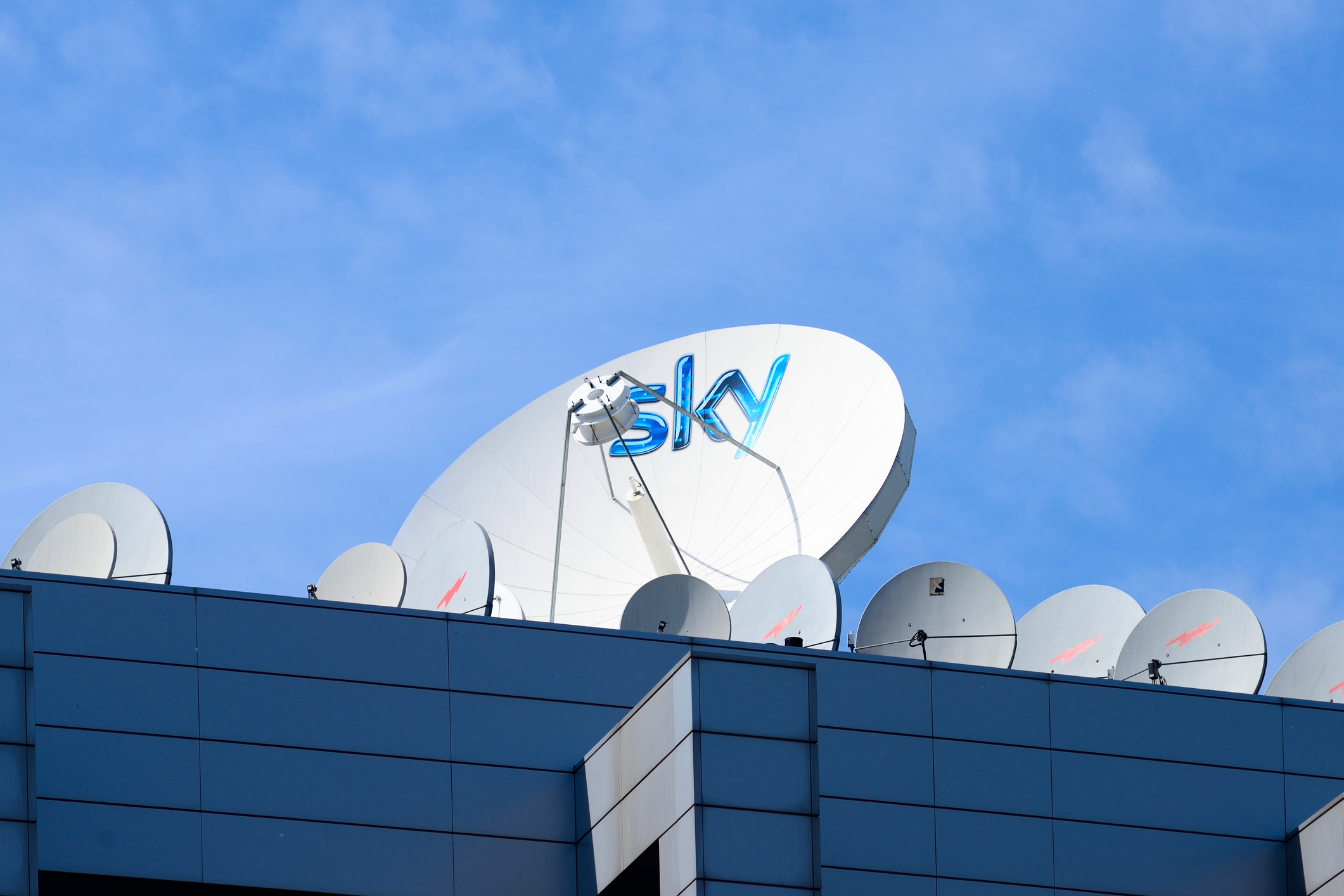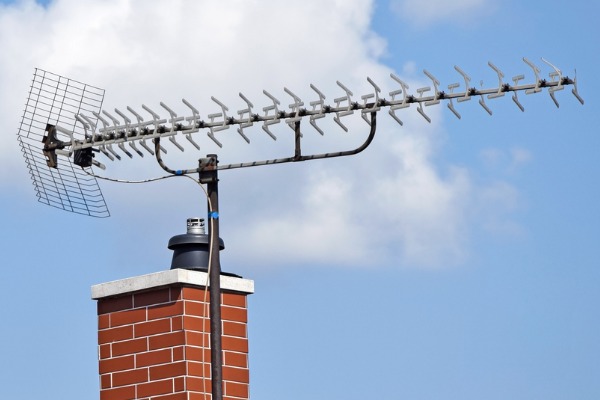Having a TV antenna installed for your television is a great way to enjoy the perks of digital entertainment! With this equipment, you can receive satellite signals from television stations, and have the chance to watch the news and even your favourite TV shows! If you wish to buy one, you should also know how to choose the right kind of TV antenna.
Although, if you are on a budget and would instead use a low-cost alternative, not to worry because Aerialforce provided simple steps on how to make a satellite flying lead to get free channels!
COAT HANGER TV ANTENNA
This simple and easy DIY project can be done in any house around the UK. You won’t need to buy new materials, because you can find coat hangers and paperclips lying around in your home!
Materials you need:
- emery board/ sandpaper
- used metal coat hanger
- scotch tape
- small piece of a metal paper clip
Best CCTV installers and Aerial engineers near you
Steps:
- Scrap off the layer of your coat hanger by rubbing the sandpaper or emery board on the surface of the coat hanger. Keep rubbing the sandpaper or emery board until the coat hanger becomes bare metal.
- Uncoil the hook of your coat hanger and twist it until the wire joint becomes open and unbent.
- Next is to get the small paper clip and bend it until it turns into an S-shaped. The short end must be bent at a 90-degree angle while the bent portion should be 1/4 inch long. You will plug this section to the coaxial cable connector on your TV.
- Behind your TV, you will find the coaxial connector. Once you see it, place a scotch tape over the end of the coaxial connector to avoid the paperclip from shorting the centre and outer rim of the connector.
- Get the small S-shaped paperclip and plug the short 90-degree bent section of it into the centre hole of the coaxial antenna connector.
- With the uncoiled coat hanger, connect it onto the metal paperclip.
- For this to work, set up your TV menus and select ‘antenna input’. After, this will automatically scan for available channels.
DIY HDTV ANTENNA
If you are up for a more complicated house project, you’ll probably like this next DIY antenna!
Materials you need:
- 2 x 3 inches wooden board with a length of 22 inches
- 18 screws (not deeper than your choice of wood)
- Balun – is a type of transformer used in a television antenna to balance signal output.
- Copper Wire
- Disposable Grill or any aluminium window screen
- Pencil
- Power drill
- Screwdriver
- Tape Measure
- Wire Cutter
Steps:
- Lay the wooden board horizontally and mark lines from left to right with a pencil at the 2-inch mark, the 7.25-inch mark, the 12.5-inch mark, and the 17.75-inch mark. Once done, draw a 1-inch gap down the middle of the marked lines to have eight intersecting points. These points will be your guide holes for later.
- Get the copper wires and measure it to 14 inches and cut eight portions of the same measure.
- Each wire must be bent halfway making it 7 inches long for each side. By doing this, the wire must be in the shape of a ‘V’, while the ends must be 3 inches apart. Note: these measurements are crucial for the antenna to perform well!
- Drill the eight guide holes (from step 1) and attach the centre (bent portion) of the V-shaped wire to the board using the screws and washers. After, each V-shaped wire must extend and point outward from the board. Your board must look like it grew several pairs of legs.
- For the following step, screw the two disposable grill tray behind your antenna using two screws. Then, from the centre (bent portion) of the copper wire, join them together with a wire by crisscrossing (‘X’ shaped figure) the left and right end section, and leaving the middle part parallel. Unlike the left and right end section, the central part’s wires must not touch each other.
- Strip a segment of insulation from the two middle wires so that attaching it to the balun will be easy. If you are not sure how to do this, there will be an instruction that comes with the balun after your purchase.
- Attach the balun to the two middle wires, and use a coaxial cable to have the antenna connected to your HD television.
- As a final step, you will need to find the nearest TV transmitter to align your homemade antenna.
Get Fast-Service Aerial Repairs and CCTV Installations
PVC PIPE SATELLITE FLYING LEAD
This DIY satellite flying lead is best to put outside of your home! If you have enough space for this PVC antenna, this will be a perfect project for you.
Materials you need:
- Copper Tubing
- Electric drill
- PVC pipe
- Screwdriver
- Tape Measure
Steps:
- Using the 1/2 inch copper tubing, bend a half-circle in a 26-inch diameter and add 1 inch extra on each end. Press each end and turn them outwards. After, form another half-circle with the same measurements and turn it inwards.
- Add a new piece of 1/2 inch PVC to each connection to bolt the pressed edges to two of the PVC ends for the middle to fit into a slot supporting the entire body. You will see that there is no electrical contact between the two pieces of copper tubing except for the 300 ohms matching transformer.
- Dart the cross to a 2 inch PVC end cap and use a lock washer or double nuts to tighten its grip. After, stick the cap to a 20-foot piece of 2 inch PVC pipe.
- The next step will be to attach the 300-ohm matching transformer to the two pieced copper tubing. Link the cable to the transformer, tape and run down the 2 inch PVC pole.
- Then, shove a piece of pipe to the ground and set the antenna pole over it and securely put it above levelling your roof. If you go higher than 20 feet, you will need to use guy wires. Also, if you used a metal pole, make sure to have it grounded to the ground rod with the use of your electric meter.
With these simple homemade antennas, you can get free tv channels in your flat without the expensive cable subscription. If you like to try out these projects, feel free to work on it!
Be advised that these DIY antennas can be poor in quality especially when you live far away from broadcast television stations. However, this list of projects is a creative and cheap way that works!
Despite not getting high over-the-air receptions, good quality pictures, and the best tv signals, these DIY antennas can make your tv experience much better compared to not having one.
Although, if you want to get unlimited tv channels for your home, you may want to hire professionals like Aerialforce engineers to do a TV Aerial installation. You’ll surely get high-quality videos, strong TV reception, and good cable service.
Need professional help? Call Aerialforce now for same-day installations!








